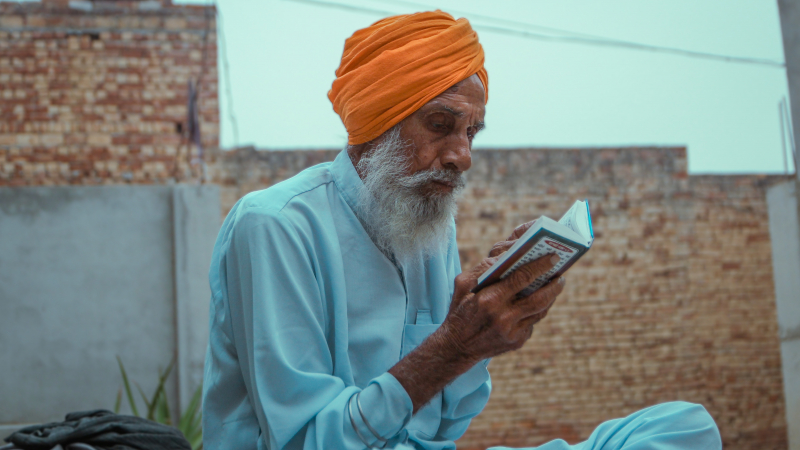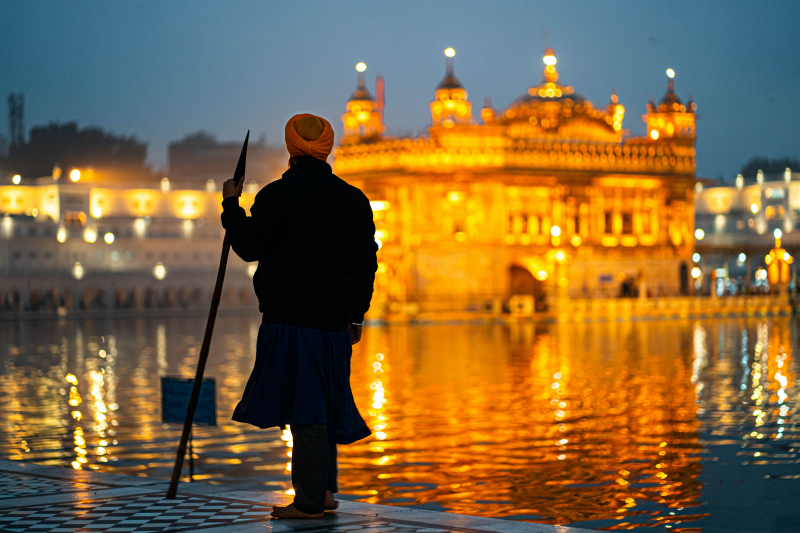Where Sikhism originated
Guru Nanak, the founder of the Sikh tradition, was born in 1469 CE in Punjab, South Asia. He led a life of spirituality, service, and honesty, and the people who began to follow his teachings were known as Sikhs. The Sikh community grew under the tutelage of eleven religious leaders known as gurus, the last of whom died in 1708 CE.
Today, the community's authority is held by two entities: the Sikh holy text known as the Guru Granth Sahib and the community of initiated Sikhs known as the Guru Khalsa Panth.
The Guru Granth Sahib is the Sikh text that maintains ultimate authority in the Sikh tradition. The content was compiled by the Gurus themselves and incorporates their musical writings. The Gurus also integrated works from other spiritually exalted people who lived in South Asia and shared a similar worldview.
The subjects of the scriptural pieces are primarily concerned with the nature of heavenly experience and the actions one can take to obtain it. The entire text is written in verse poetry, and the vast majority of it is set to music.
The Guru Granth Sahib is regarded by Sikhs as a revealed text, and it is fundamental to Sikh devotional and ceremonial life. The comparatively huge scripture is the focal point of Sikh devotional settings.
The gurdwara is modeled after an imperial court in early modern South Asia, which serves as a reminder to worshippers of the gurdwara's sovereign and authoritative standing. A volunteer attends to the Guru Granth Sahib, which is placed on a throne.
The scripture is also incorporated into all Sikh life rites in some fashion. At a Sikh wedding, for example, the bride and groom walk around the Guru Granth Sahib several times to symbolize, among other things, the importance of the teachings in their own lives.
Each of the ten Sikh Gurus labored to foster the Sikh community, and over time, the community developed its own sense of responsibility. It progressed from having little impact during Guru Nanak's reign to being consulted by the Sikh Gurus on major decision-making occasions.
The community's power peaked in 1699 CE, when Guru Gobind Singh, the tenth Sikh Guru, summoned all Sikhs to Anandpur on Vaisakhi, the day that traditionally commemorated the harvest festival.
The society of initiates was formally institutionalized and given authority on this day. This society, which became known as the Guru Khalsa Panth, provided an official organization for people who adhered to the Sikh way of life. Accepting initiation (amrit) and embracing a couple of the basic principles stated in the Sikh code of conduct (Rehat Maryada) reflect this commitment. The prescriptions in this document require initiated Sikhs to engage in regular prayers and wear five articles of faith, among other things.











